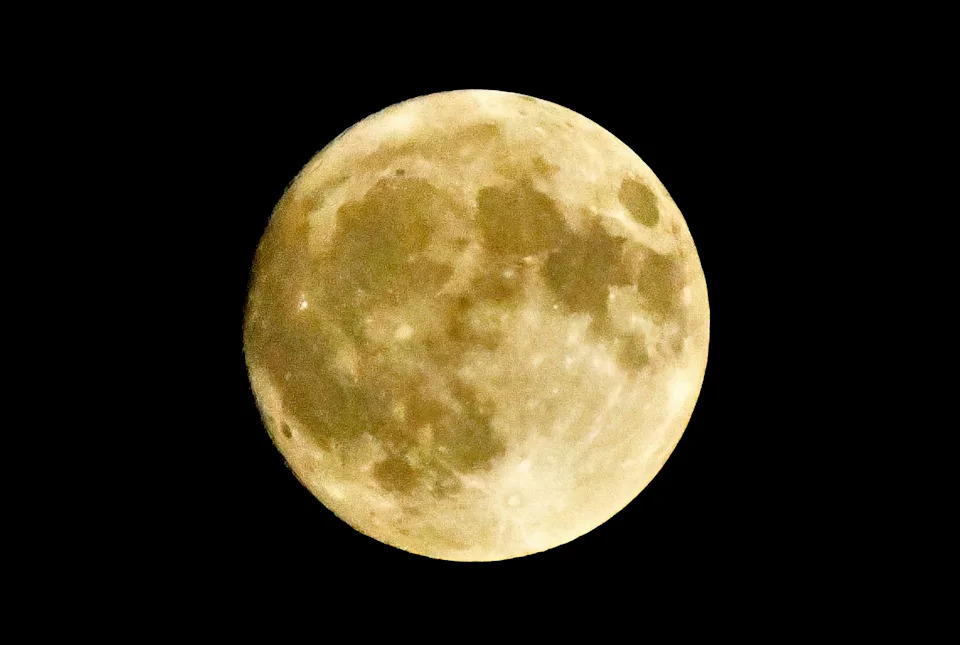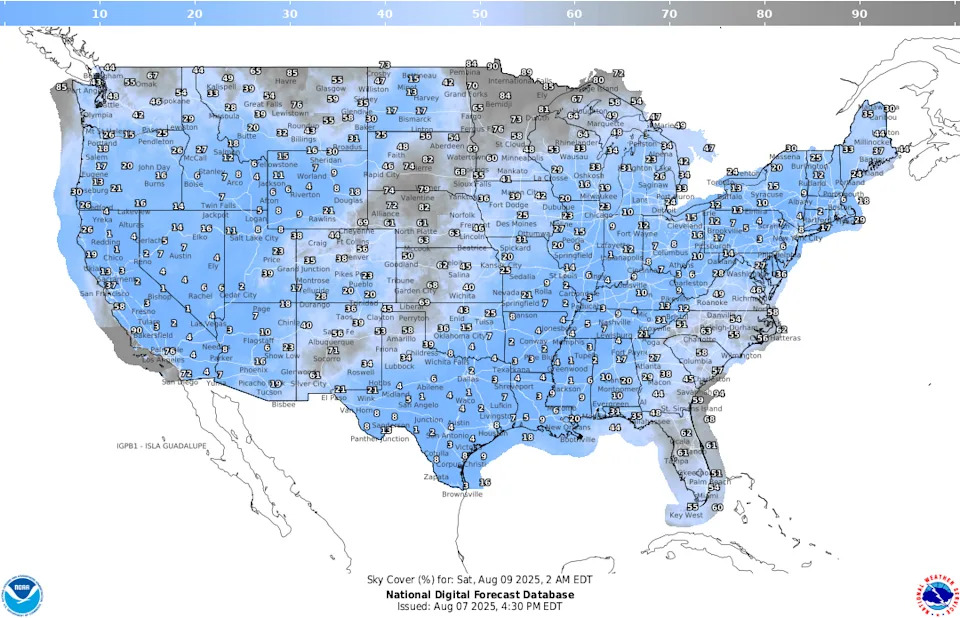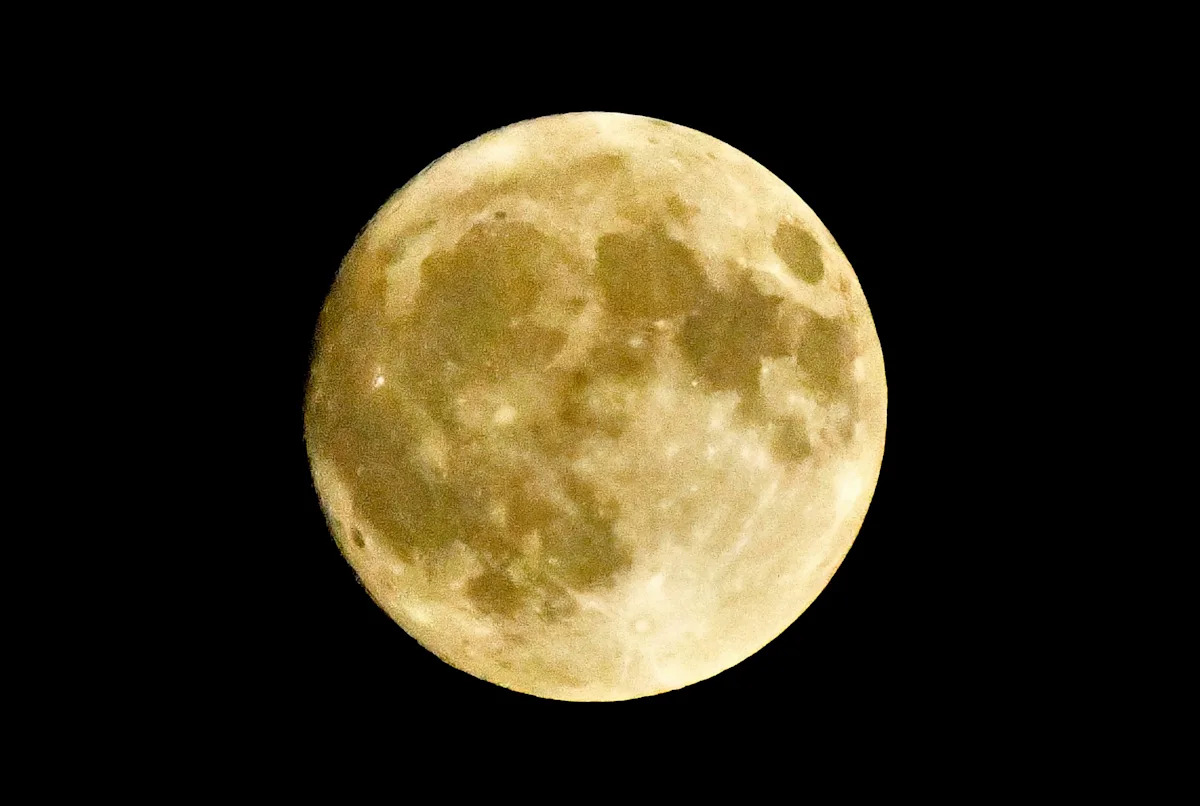While the peak of this year’s Sturgeon Moon is less than a day away, there’s still time to get the details on how to see it, where its name originated, and more.
The moon will shine bright when the sun sets on Friday evening, Aug. 8, but the official peak of the August 2025 full moon is not until the early morning hours of Saturday, Aug. 9, according to Time and Date.
Moonwatchers willing to stay awake for the nighttime spectacle will have the chance to peer at it while at its brightest.
Here’s when and how to get the best view of this year’s Sturgeon Moon.
How can I see the Sturgeon Moon?
In North America, the Sturgeon Moon will peak, or reach its highest point and illumination, on Saturday, Aug. 9. Times vary by location:
Eastern time – 3:54 a.m.
Central time – 2:54 a.m.
Mountain time – 1:54 a.m.
Pacific time – 12:54 a.m.

A full Sturgeon moon on Sunday, Aug. 18, 2024.
How difficult will the moon be to see? NWS cloud cover forecast
Sky condition, or the average amount of the sky covered with thick clouds, can sometimes impact how visible the moon is.
Around 2 a.m., just under two hours before the Sturgeon Moon peaks, sky cover will be higher in southeastern states such as Florida, Georgia, and the Carolinas, midwestern states such as South Dakota, Nebraska, and Kansas, and also Montana in the western U.S.
The map below shows the National Weather Service’s forecasted sky cover at 2 a.m. on Aug. 9. Areas shaded in gray are expected to have greater cloud cover.

This National Weather Service forecast shows the projected sky cover at 2 a.m. ET on Saturday morning, Aug. 9, 2025. Areas shaded in gray are expected to have greater cloud cover.
Tips for seeing the moon this weekend
The moon will be visible without any special tools, but those wanting to see more details on the surface of the moon can invest in stargazing binoculars and backyard telescopes.
According to Time and Date, those wanting to see the moon and stars that night can try the following:
Check to see what time the sun sets in your area.
Check to see what time the moon rises and sets in your area.
Look at the moon while you’re in a dark place away from artificial light.
Let your eyes adjust for 15 to 20 minutes.
Check the weather in your area.
Why is it called the Sturgeon Moon? Other names include Corn Moon
The Sturgeon Moon’s name comes from the sturgeon, a freshwater fish that was once abundant in the Great Lakes in North America around this time of year, according to Time and Date. Sturgeon can measure over 6 feet long and weigh around 200 pounds.
The fish dates back to 136 million years ago, according to the Old Farmer’s Almanac. Native Americans living near the Great Lakes and Lake Champlain once caught the fish during late summer and it became a regular part of their diets. Today, there are about 29 species of sturgeon.

A large sturgeon swims on the surface of the water.
Other names for the Sturgeon Moon include the Corn Moon (Algonquin and Ojibwe people), the Harvest Moon (Dakota people), and the Mountain Shadows Moon (Tlingit people of the Pacific Northwest), the Old Farmer’s Almanac said.
The almanac added that more names and meanings for the Sturgeon Moon include:
Flying Up Moon – A Cree term alluding to young birds learning to fly.
Ricing Moon – An Anishinaabe name for the moon that signifies it’s time to gather maturing crops.
Black Cherries Moon – A term the Assiniboine people gave this period, referring to chokecherries becoming ripe.
Saleen Martin is a reporter on USA TODAY’s NOW team. She is from Norfolk, Virginia – the 757. Email her at sdmartin@usatoday.com.
This article originally appeared on USA TODAY: August 2025 full moon: Date, time, how to see Sturgeon Moon

